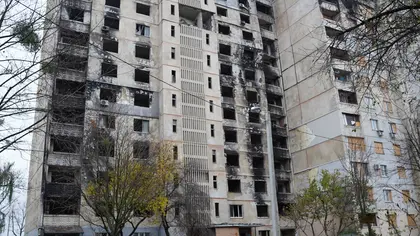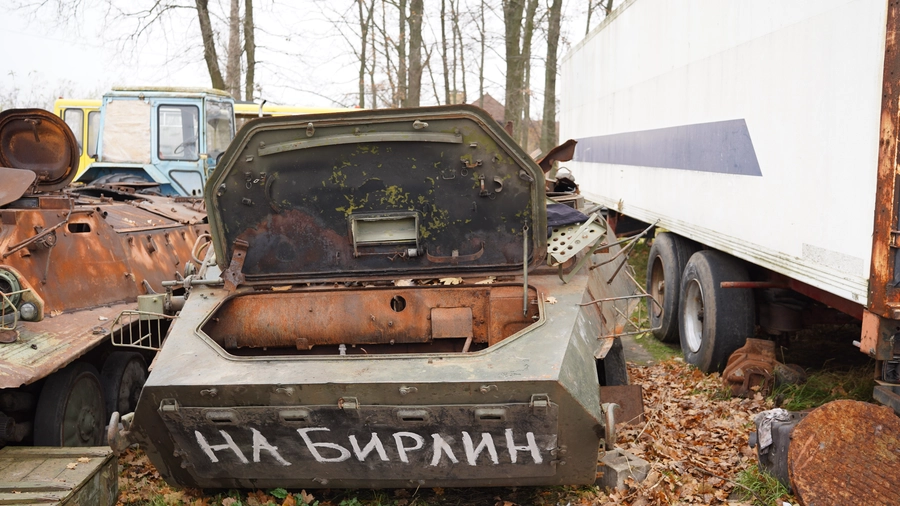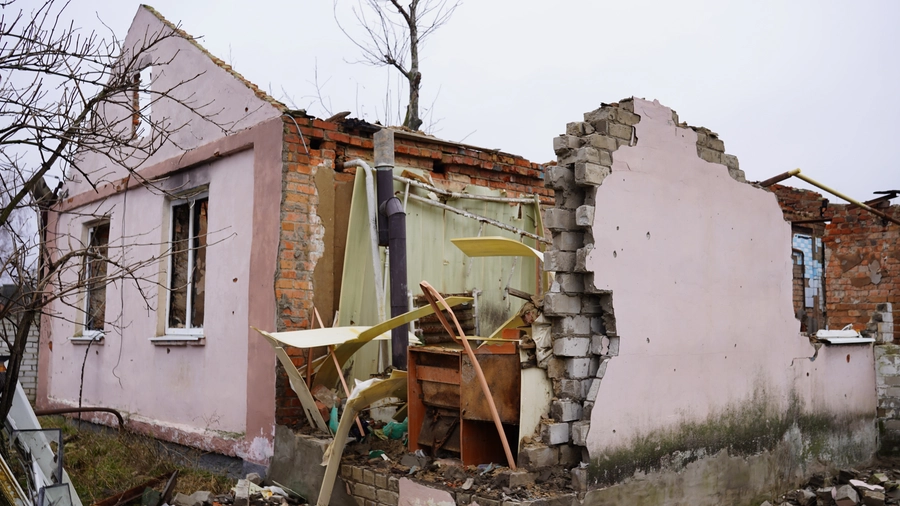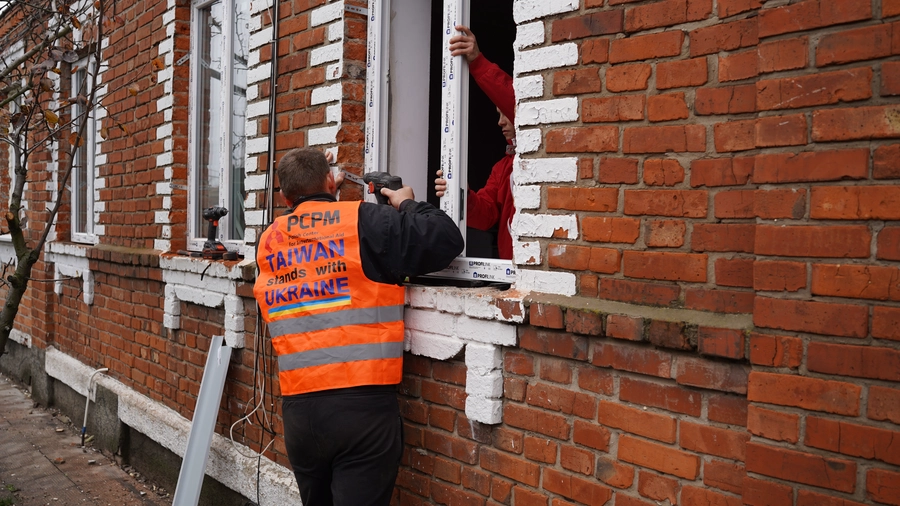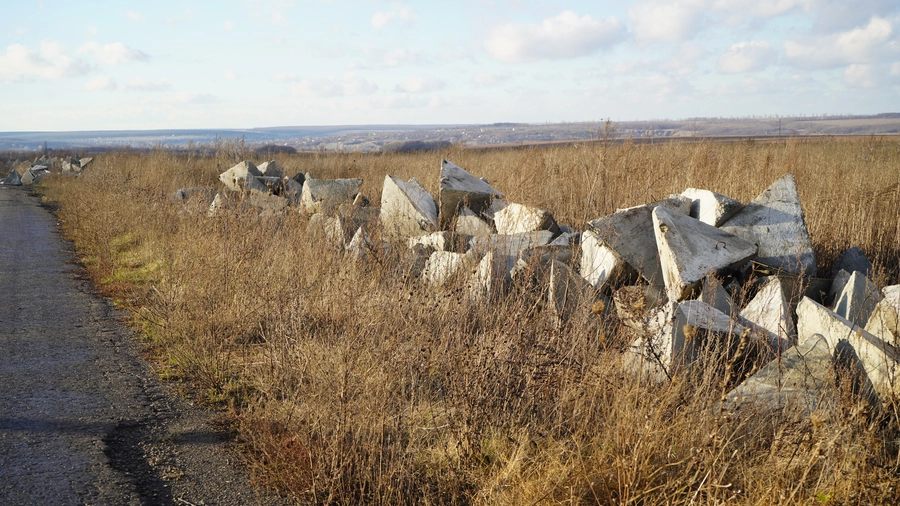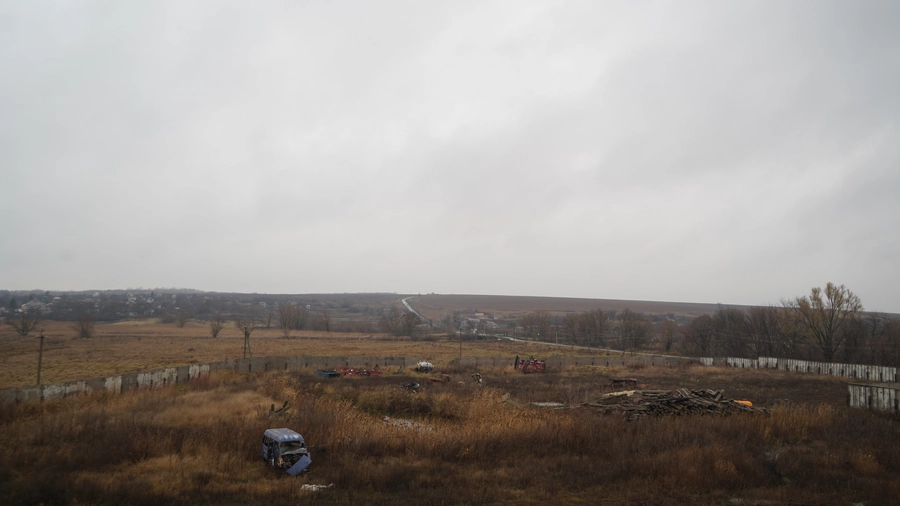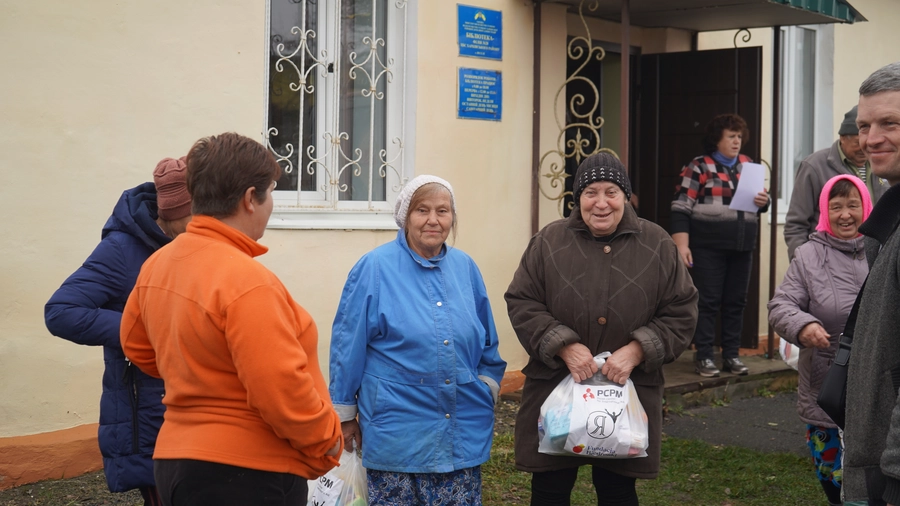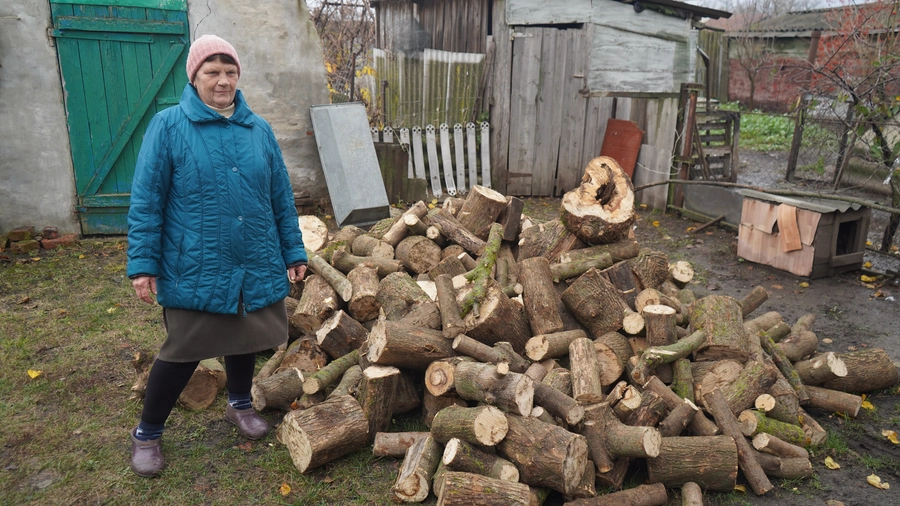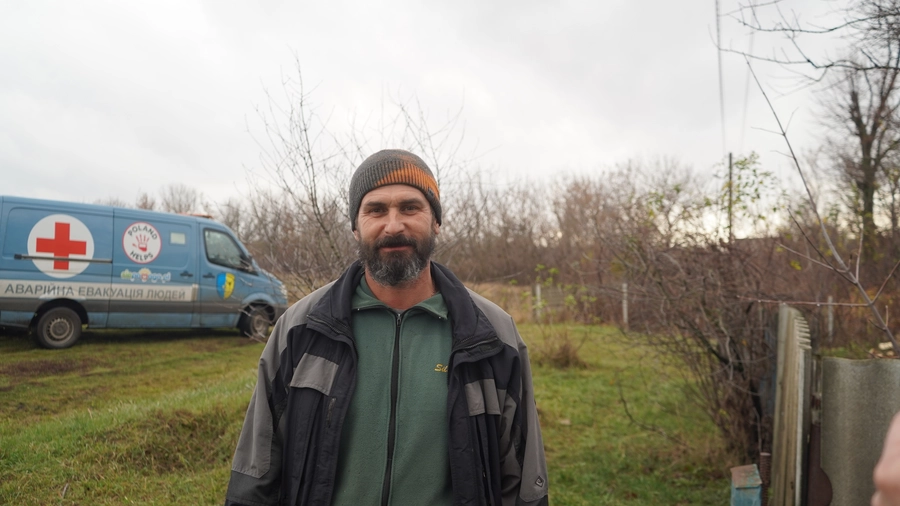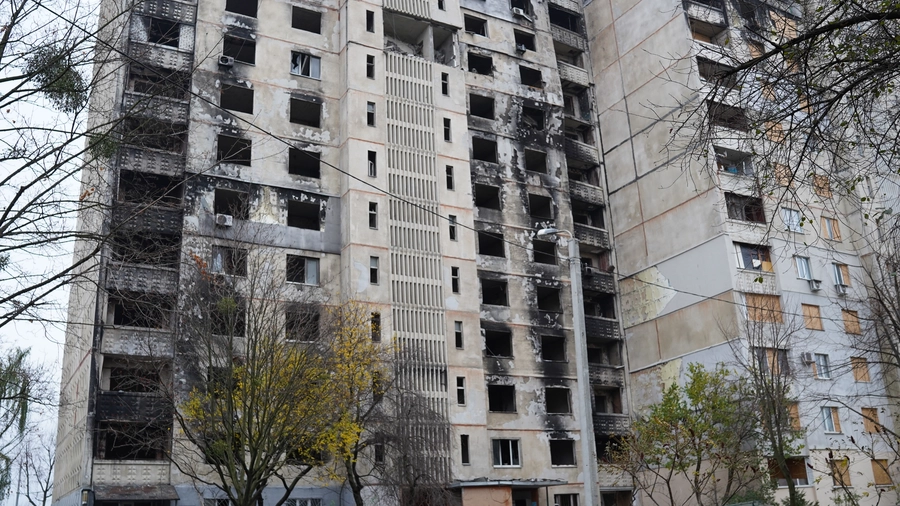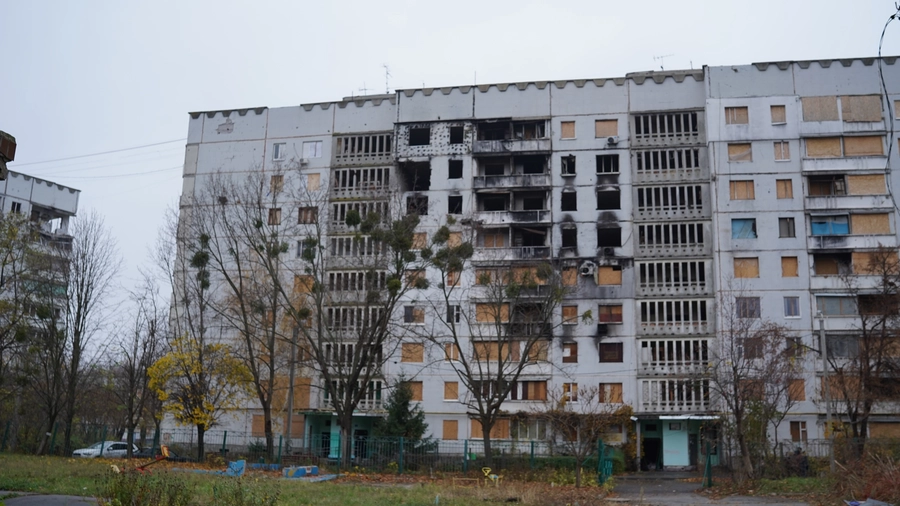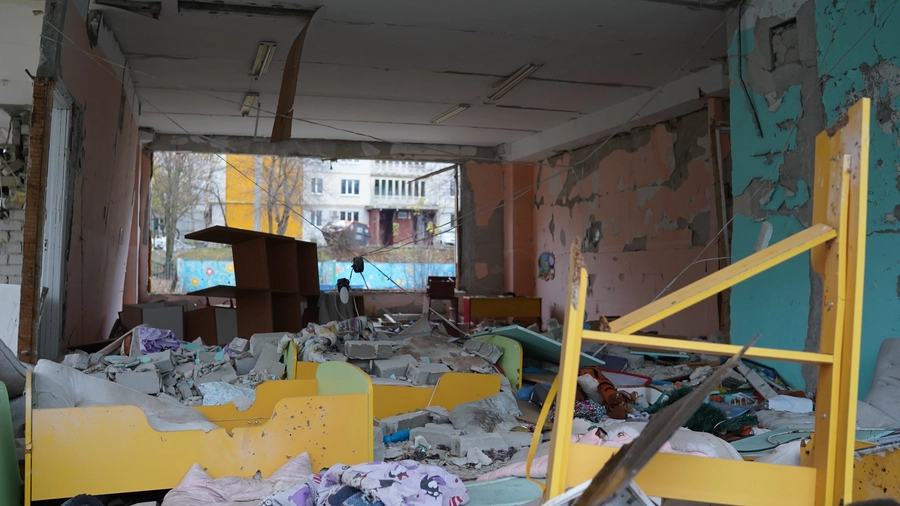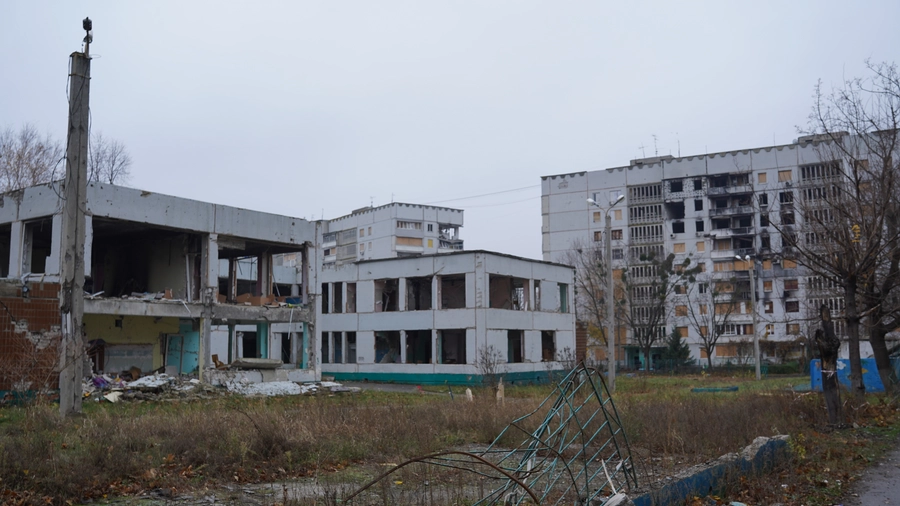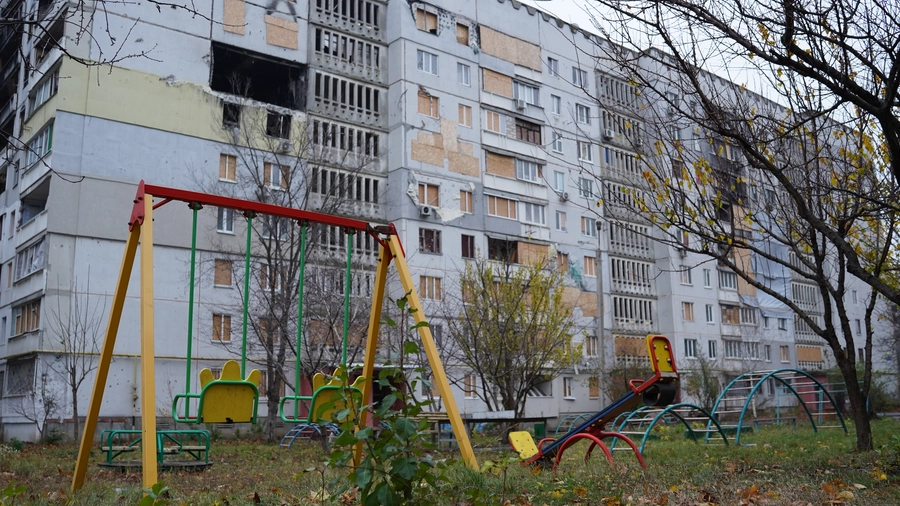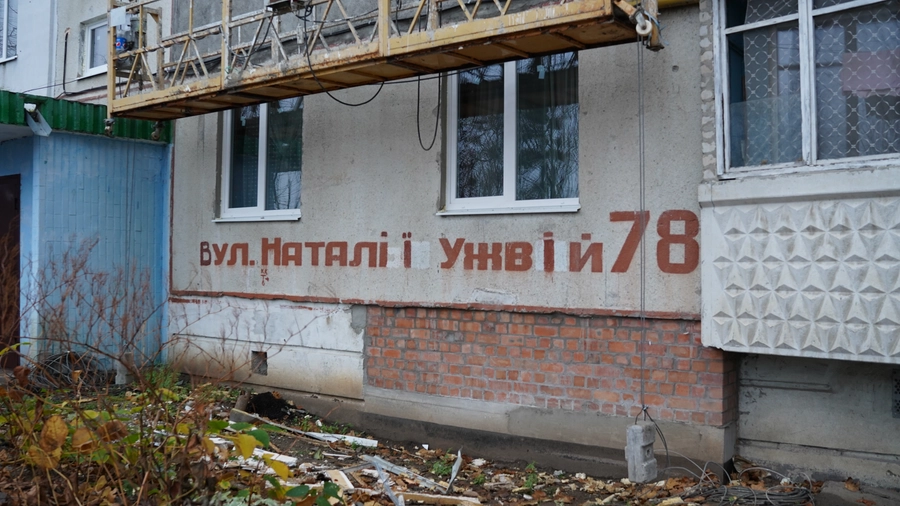An air-raid alert sounds in Kharkiv and surrounding towns. I read on the local Telegram channels that a Russian MiG-31, maybe carrying a Kh-47 Kinzhal missile, has just taken off. The residents didn't even stop as the sirens rang through the city’s darkened streets. For them, it was an everyday occurrence:
“If we had to enter the shelter every time there is an alarm, it would be impossible to live,” says a woman I met on a train from Kharkiv traveling west.
JOIN US ON TELEGRAM
Follow our coverage of the war on the @Kyivpost_official.
The people of Kharkiv try to live as normally as possible. But a large part of the city's identity has been taken by Russia’s invasion – its vast numbers of students. The city is renowned for its universities, not just those from eastern Ukraine, but also the young people who once attended from the Middle East, Asia, and Africa. The city still has a population of about one million, but the streets are no longer crowded with partying youths as they once were.
Kharkiv may now be out of the range of Russian artillery, but there is still a threat from missile attacks. That's why students and pupils are now studying remotely in their fourth year – their studies interrupted by the COVID-19 pandemic. More than once I hear the phrase “A lost generation” from the mouths of Ukrainians.
Just beyond Kharkiv’s bypass is the town of Tsyrkuny. When the full-scale invasion began on Feb. 24, 2022, columns of Russian troops drove through this village: “They wanted to go further west,” says Mykola Sikalenko, the head man of Tsyrkuny. A dilapidated BRDM-2, whose journey ended 20 kilometers from the Russian border with the slogan “To Berlin” painted on it serves as a reminder of that time.

Epilogue of the Russian Empire Wanted
“Build back better”
Tsyrkuny is one of six settlements that were chosen by Volodymyr Zelenskiy as a “model” city for reconstruction with the slogan “build back better.” $27 million in funding has been set aside from Ukraine's central budget for the rebuilding.
Sikalenko says “There are new guidelines, public buildings are to have shelters, they are to be energy efficient, environmentally friendly, and adapted for the disabled and elderly.”
He points to a dilapidated building next to the tent where we are talking. “This school will be rebuilt almost from scratch. Only the walls will remain from the old building, and everything will be new.”
The region was under Russian occupation for more than seven months. Nearly all public buildings were damaged and looted or in many cases destroyed during the fighting. It is planned to rebuild damaged public buildings or rebuild from scratch those that were destroyed.
Residential buildings are also in urgent need of repair. According to Viktor Schmygol, who is a reconstruction attorney and liaison between the local government and the government, there are plans to set aside plots of land for housing.
Reconstruction will take time. The city's mayor, meanwhile, draws attention to the needs of the here and now. Before the war, 6,000 people lived in the town of Tsyrkuny, with another 14,000 in the surrounding municipality. Now only 1,500 largely elderly or disabled residents remain in the area. Living conditions are difficult, as is the case for Halina, forced to live in a cowshed.
Halina was firmly convinced that “My house was hit by an Iskander,” even though the extensive damage to her house is more typical of an unexploded artillery shell. The projectile flew into her house and out the other side, smashing the brick fence. Missile or not - it was enough to deprive the senior citizen of the roof over her head.
“I had 4 TVs and a beautiful kitchen! Now in my old age, this happened to me, and if it wasn't for Misha, I wouldn't even be able to live in this barn,” says the elderly woman. Misha, or Michal, is an employee of the Polish International Aid Center Foundation (PCPM). In Tsyrkuny, he is coordinating the reconstruction of roofs and windows for about 80 houses. The Foundation supports people like Ms. Halina living in the most difficult situations.
“Such repairs prepare for winter and will allow these people to survive. We don't have the funds for full renovations. Those would be too great a cost for our foundation, which depends heavily on individual donors. Money for winter preparation was donated by the Taiwanese community,” says Anna Radecka of PCPM.
“The needs are overwhelming, and we are the first organization to start such activities here. But there is so much work that even if 10 organizations showed up, everyone would have work to do. And this is, after all, only one locality,” she adds.
Where is this Bandera?
To the north of Tsyrkuny are the villages of Lyptsi and Vesele. As we drive between the small hills, typical of this part of the country, destruction and other traces of war emerge are revealed time and again. Anti-tank barricades have been pushed to the side of the road, but empty trenches and mine warning signs are reminders of the ongoing danger. For this reason, we see very few agricultural machines in the fields, only long grass swaying in the wind.
We go to Lyptsi and Vesele together with the PCPM Foundation and a Ukrainian organization, which brings firewood and basic humanitarian products donated by the Polish organization. The wood is being unpacked in a deteriorating hall damaged by Russian shelling.
Mainly elderly people are left in the village, for whom getting firewood on their own is a huge challenge. Most of residents heat their homes with gas, but all fear that they may run out. That's why the 3 cubic meters of wood they receive provides a safety net in case of hard frosts. The elderly most with impaired mobility especially rely on humanitarian organizations for support. Their pensions are low and only enough to cover basic products so the wood and humanitarian packages they receive allow them to save money for other needs.
The PCPM Foundation plans to deliver household chemicals and wood to other villages in the area later this year.
“There were Buryatian, Asians, Kalmyks, Chechens, here,” says a resident of Vesele recalling an attack by the Russian army. “O here stood a tank, and the turret flew very far away,” he points to a field next to the hall. It is becoming increasingly difficult to see the piece of the tank which is under the overgrown grass and weeds. There is no one to clean up the damage, and on top of that, there is everywhere the danger of landmines.
“All my life I've lived here and Russians call me a fascist and a Bandera. I have never seen one in my life, I don't even know what Bandera looks like,” a resident of Vesele relates his experience from the first days of the war. When I say goodbye to him, he stresses that he does not want his name to appear in the media. He is afraid because he describes himself as a partisan.
“They even took away my guitar.”
There is a community center in the center of the village. There is no electricity, but Ukrainian songs ring out from inside.
Veteslav, one of the residents, recalls: “We had dance groups for children, young people, and the elderly. We traveled around Ukraine and gave performances, and in the village, there was a concert every week. I play the guitar and harmonium, and I also sing. It was a small village, like many in Ukraine, but we lived a normal life. Then they came...”
He points to the hall where wood is being unloaded. “One day the occupants were fired upon by their helicopter,” he squawks with a wave of his hand.
The Russians took everything they could and destroyed what they could not. According to accounts given by residents of Lyptsi, “the Russian soldiers thought they were going to ‘liberate’ us but they soon saw that things are not bad at all in this Ukraine.” They saw brick houses, good surfaced roads, mechanized agriculture. They quickly realized why people did not welcome them at all as liberators, the villagers recalled.
“I am a tractor driver and worked at a local cooperative. Well, but how to sow something here when everything is mined,” says one of the residents, who is collecting his portion of firewood.
Artur Vingoradov from the local organization “I am Saved,” which works with the PCPM, reminds us to always check under our feet. He shows a photo of a small Russian anti-personnel landmine, a PFM-1 commonly known as a “butterfly.” There are hundreds of thousands, if not millions, of them lying all over Ukraine. Such mines are scattered by rockets, making it unclear where they might be.
This type of mine is designed not to kill, but to injure. An explosion can end up amputating a limb of a person. There is a macabre logic behind it: a wounded soldier involves more people and resources to look after him than the to care for the body of a fallen one.
The man reassures us that “here under his house it's unlikely to be any,” but a dozen meters away there may be: “it's already a headache.”
I asked him why doesn't he leave if it's not safe to farm the land?
“Where will I go? All my life is here, I'm here with my wife. A wife is like a second hand, and a marriage is like a body, it must be complete to function well,” he says.
People under the rubble
Kharkiv itself also shows innumerable scars from Russian shelling. In particular, the houses that are furthest north - nearer the Russian border - are uninhabitable due to damage. In one of them, where demolition is underway, Ukrainian volunteers from “I am Saved,” who are also from Kharkiv, tell us that victims still lie buried under the rubble.
During the Russian shelling, the first row of apartment blocks served as a protective wall for the rest of the district. But the buildings there are not free from destruction.
In the middle of the neighborhood is the rubble of a building whose former purpose can only be discerned by the school boards and lockers strewn among the bricks and concrete fragments. Despite the destruction of the residential blocks or the school, life in the neighborhood continues. A gradual reconstruction is underway. Drills and grinders can be heard, drowned out once in a while by the anti-aircraft alarm. Here, too, the PCPM Foundation, will help residents and replace hundreds of windows in the coming weeks. This will be the third winter they have endured since the war began.
The repairs are not only practical, they serve as confirmation to residents that Ukraine is not going anywhere. In addition to the real works, there are also symbolic ones. Russian characters have been removed from street names and replaced with Ukrainian ones to act as a demonstration that Kharkiv will never be Russian.
Jan Wysocki is a humanitarian worker from the Polish Center for International Aid.
The views expressed in this opinion article are the author’s and not necessarily those of Kyiv Post.
You can also highlight the text and press Ctrl + Enter


